Greece › Athens › Archaeological Sites › Ancient Agora
Updated: January 24, 2023
By Santorini Dave
See Also
- Best Hotels in Athens
- Where to Stay in Athens
- Best Restaurants in Athens
- Best Things to Do in Athens
- Complete Athens Travel Guide
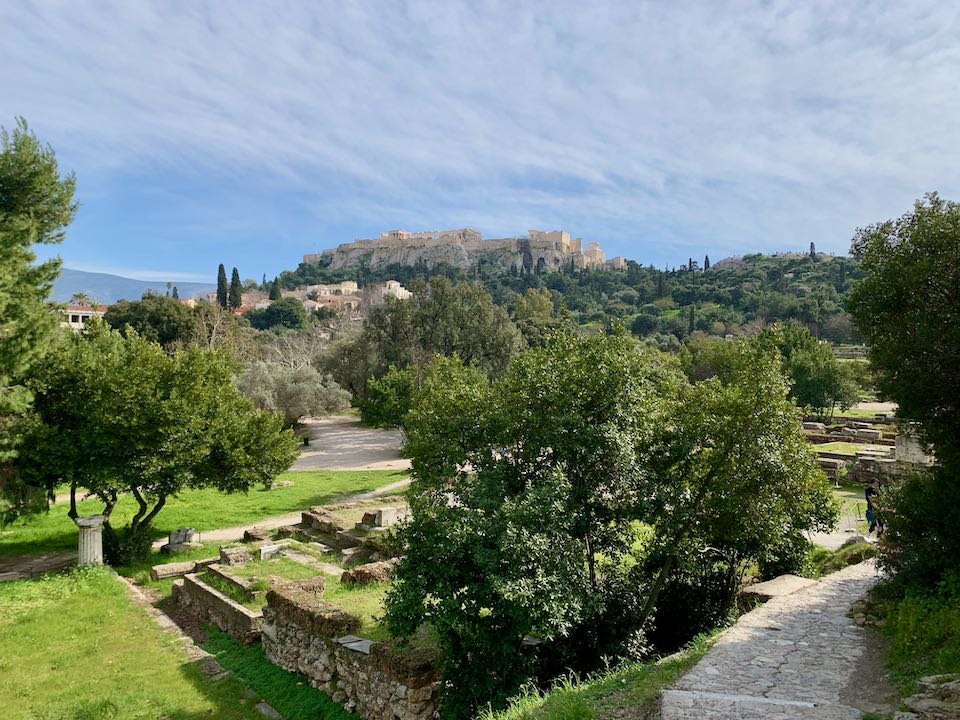
Athens’ sprawling Ancient Agora sits at the northwest base of the Acropolis and is one of the city’s top archaeological sites.
Tours and Tickets:
• Athens Pass Combo Ticket (7 archaeological sites + Acropolis Museum. No tour.)
• Athens Mythology Highlights Tour (Guided tour of Acropolis, Ancient Agora, and Temple of Olympian Zeus)
• Mythology Tour for Families (Kid-centered tour of the Acropolis and Ancient Agora)
• Private Group Tour (Ancient Agora, Plaka, & Monastiraki)
• Daily Life in Ancient Athens (private tour of Kerameikos, Ancient Agora, Roman Agora, Monastiraki & Plaka neighborhoods)Ancient Agora Hours and Information
- Hours: Open daily. Summer (April to October) 8am – 8pm; last entrance to the site at 7:40pm. Winter (November to March) 8am – 5pm; last entrance to the site at 4:40pm. Closed 1 January, 25 March, 1 May, Orthodox Easter Sunday, 25 & 26 December.
- Website: odysseus.culture.gr
- Location: Adrianou 24
- Telephone: +30 210 321 0185
- Admission Fee: Summer (April to October) entrance fee: 10€. Winter (November to March) entrance fee: 5€. Reduced admission 5€. Ticket prices include admission to the museum of the Ancient Agora of Athens. You can also purchase a 30€ combo ticket for this and 6 additional sites: Acropolis, the Roman Agora, Hadrian’s Library, Temple of Olympian Zeus, Kerameikos, and Aristotle’s Lyceum. The combo ticket is valid for 5 days and offered year round. Tickets can be purchased on site or in advance online.
- Free Entry: 6 March (in memory of Melina Mercouri), 18 April (International Monuments Day), 18 May (International Museums Day), the last weekend of September annually (European Heritage Days), 28 October, every first Sunday from November 1st to March 31st.
- Parking: Street parking, nearby pay lots.
- Nearest Metro: Monastiraki, Thiseio.
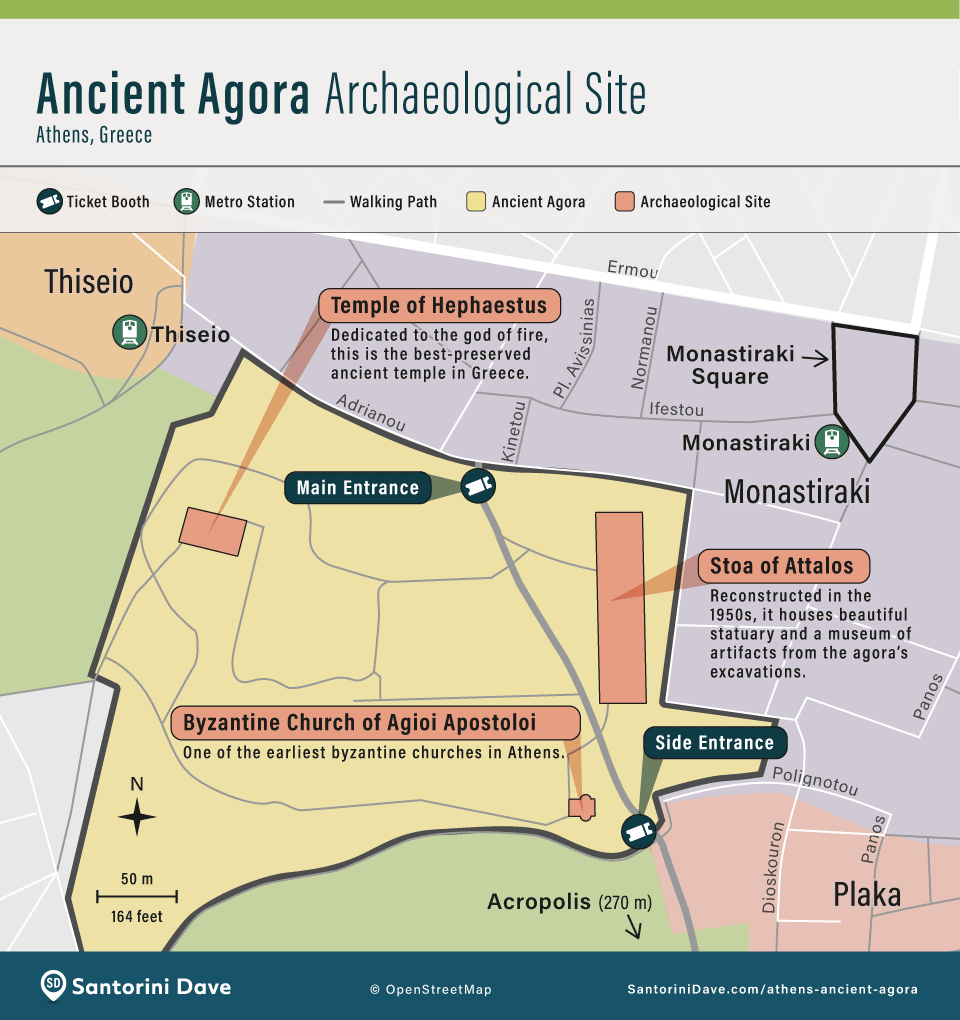
The Ancient Agora in Athens
- The Ancient Agora is located on the border of Athens’ Plaka and Thiseio neighborhoods, at the northwest foot of the Acropolis. The closest metro stations are Monastiraki (Line 3 or Blue line) or Thiseio (Line 1 or Green line), both about 300 meters away.
- The Ancient Agora of Athens is not to be confused with the Roman Agora, which is situated nearby, about 100 meters to the west.
- The Ancient Agora served as a municipal marketplace and the political, cultural, and economic center of Ancient Athens. Later, under the Roman Emperor, Augustus, the marketplace moved over to the nearby Roman Agora.
- There are 3 prominent structures at the site:
The Stoa of Attalos is a typical building of the Hellenistic Period, built by and named after King Attalos or Attalus of Pergamon 269–197 BC. A faithful replica of the original building, it was reconstructed in the 1950s and is now home to the Museum of Ancient Agora (included in admission price).
The Temple of Hephaestus (460-415 BC) is located on top of Agoraios Kolonos hill on the northwest side of the Agora. There were many potters and metal-working workshops in the area of the temple, and it is named after the patron god of metal working, craftsmanship, and fire. From the 7th century until 1834, it served as the Greek Orthodox church of Saint George Akamates. In the 19th century, the building was used as a burial place for many people who died in the Greek War of Independence in 1821. Consistent use has helped the building to remain intact.
The Byzantine Church of Agioi Apostoloi (Holy Apostles), located next to the Stoa of Attalos, is one of the earliest byzantine churches in Athens, dating back to the late 10th century. A liturgy is held once a year on June 30th.
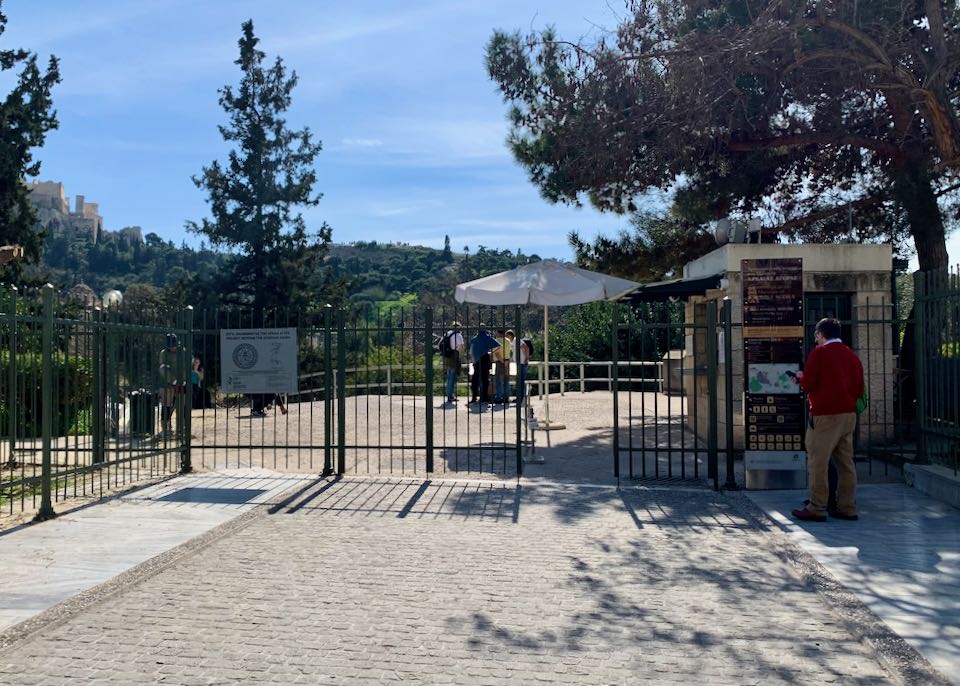
The Ancient Agora of Athens is located at the foot of the Acropolis. Its entrance is a quick and easy walk from Monastiraki Square.
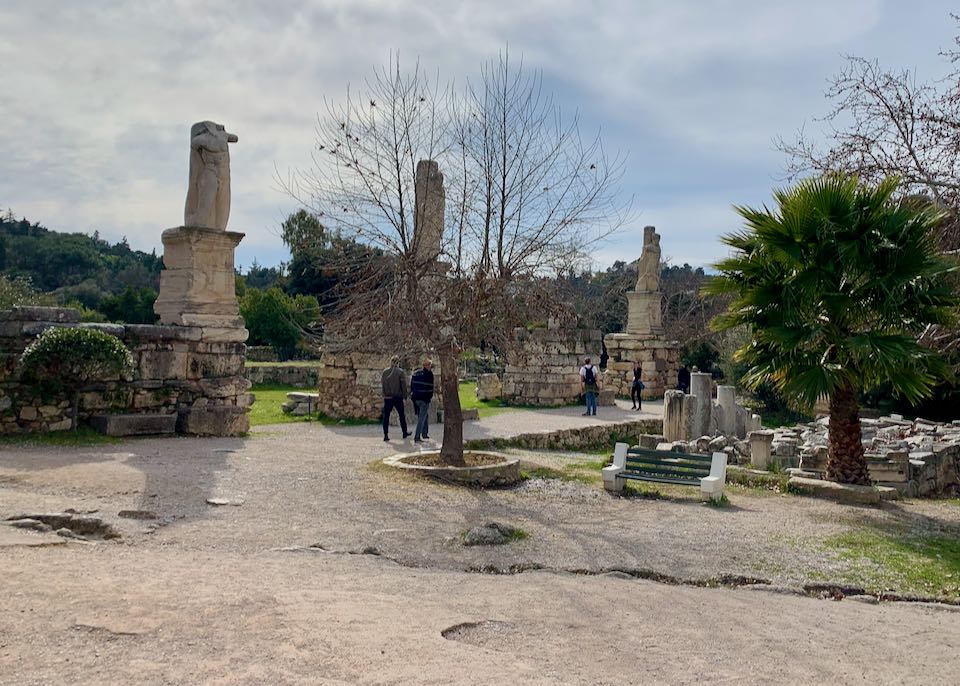
The site is open year-round, with reduced hours and admission prices from November through March.
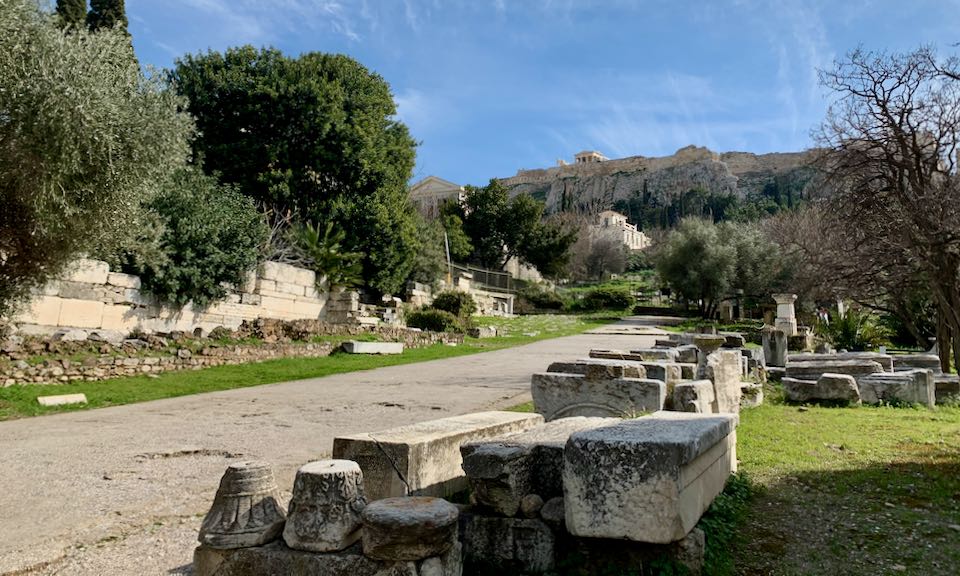
The Agora once served as the the political, cultural, and economic center of Ancient Athens. It’s cool to walk the ancient paths and imagine what once was.
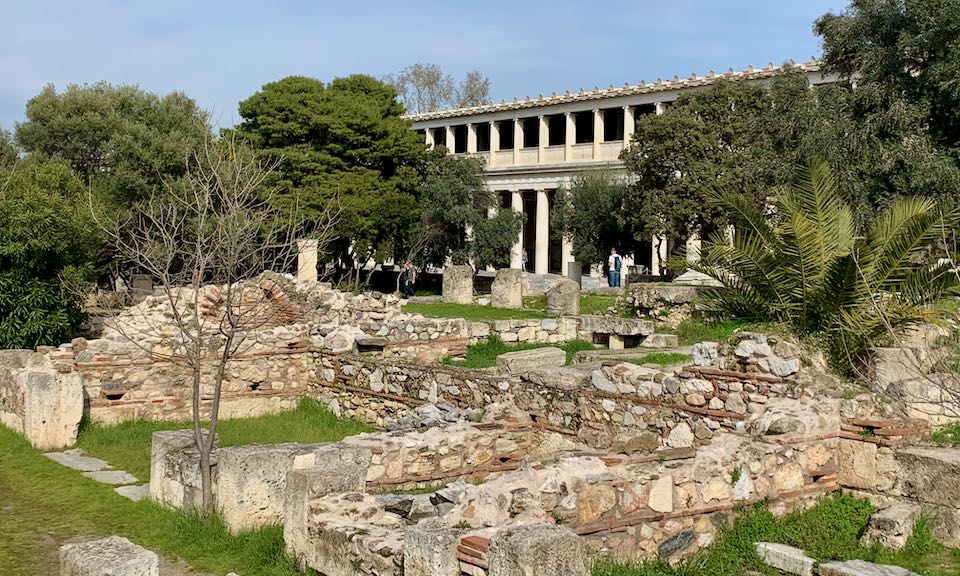
The largest structure on the site is the Stoa of Attalos, measuring in at 116 meters long.
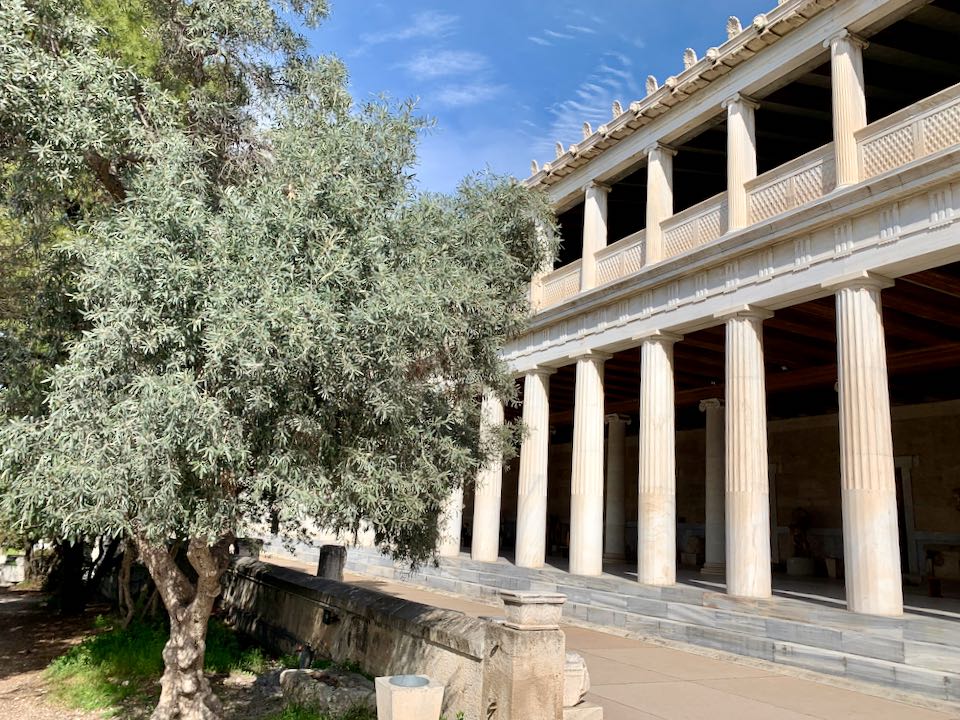
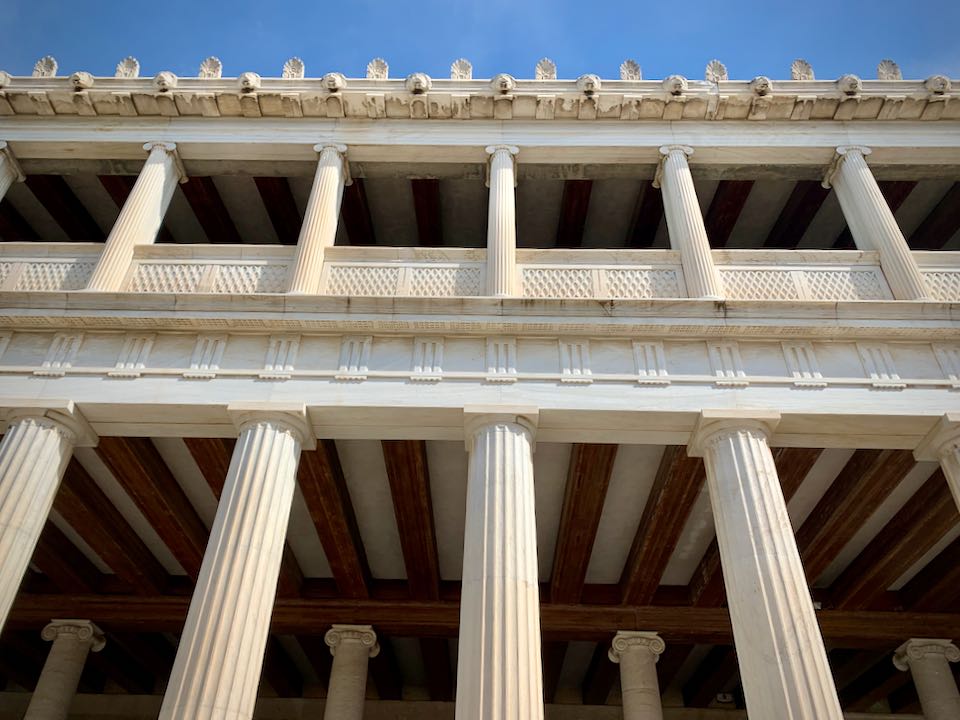
The Stoa of Attalos we see today is a reconstruction from the 1950s, but is faithful to the style of the original, built in the 2nd century BC. It is thought to have been a sort of ancient shopping mall, lined with merchant stalls.
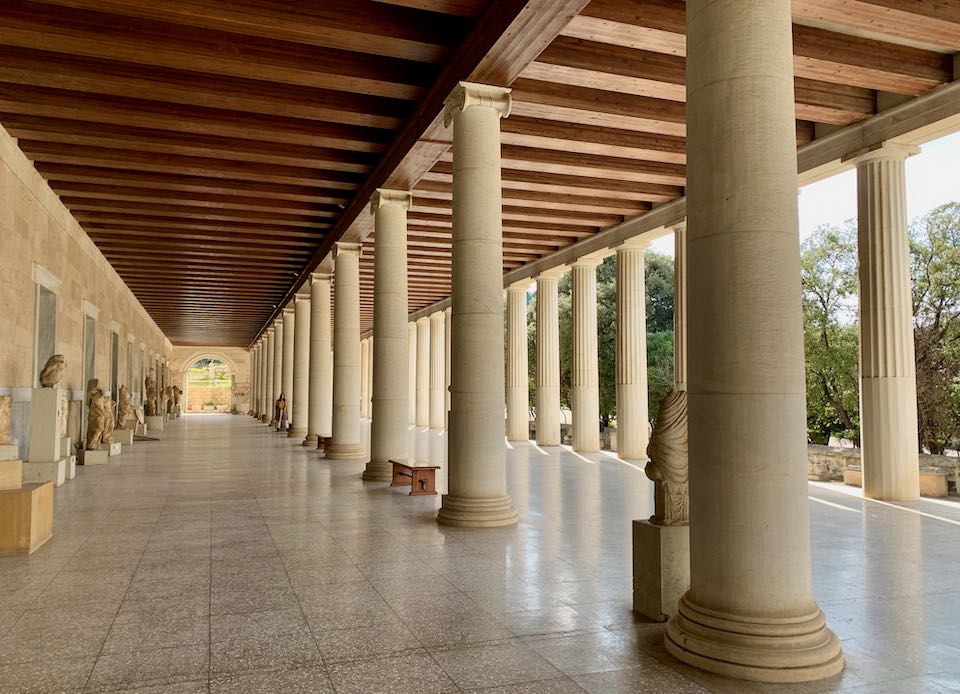
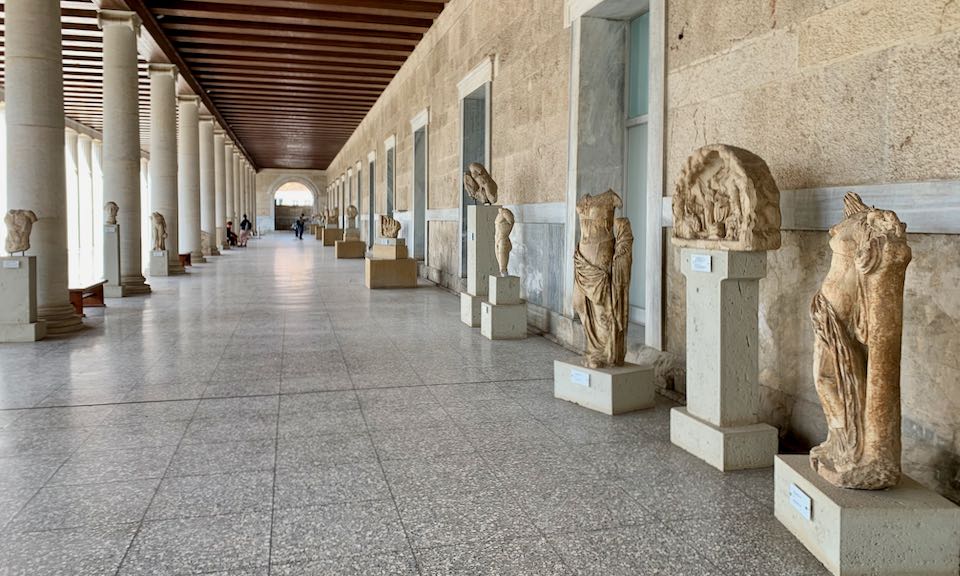
The Stoa’s impressive colonnade features beautiful marble statuary.
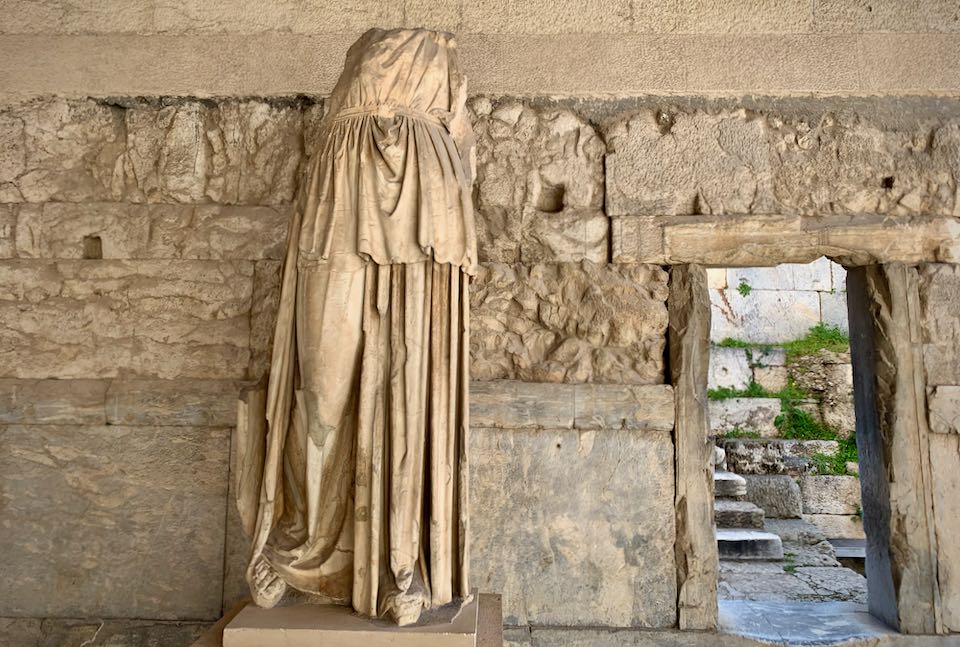
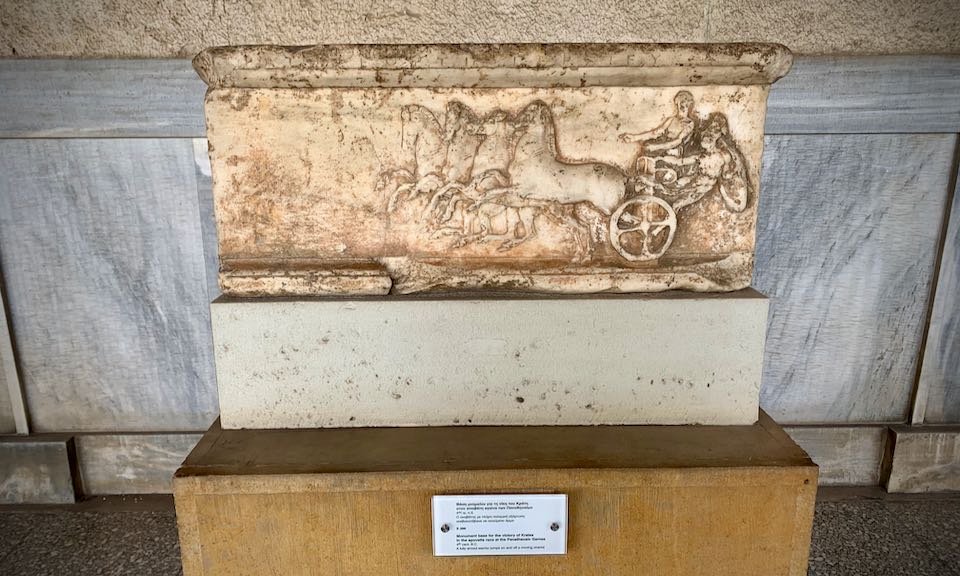
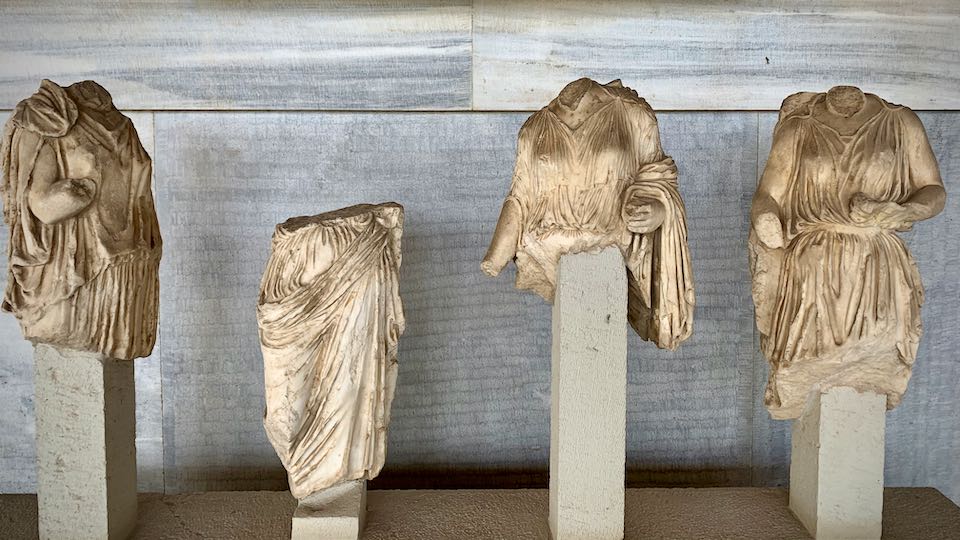
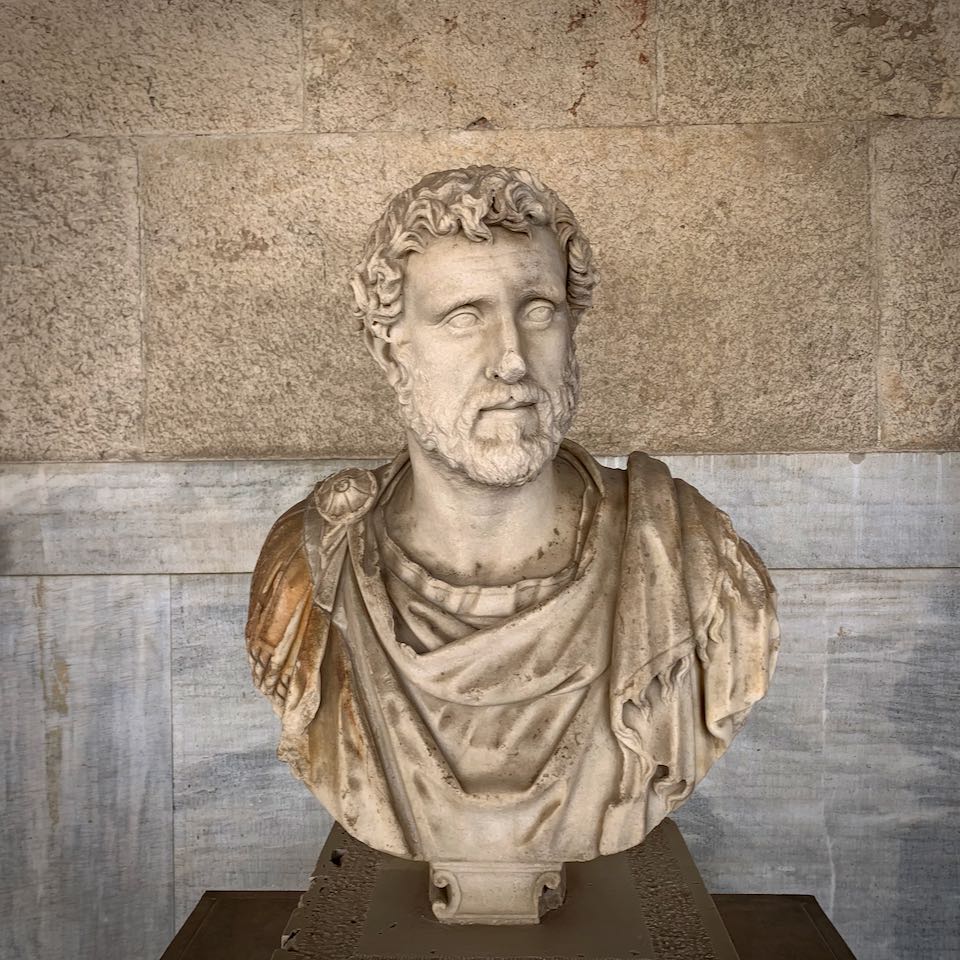
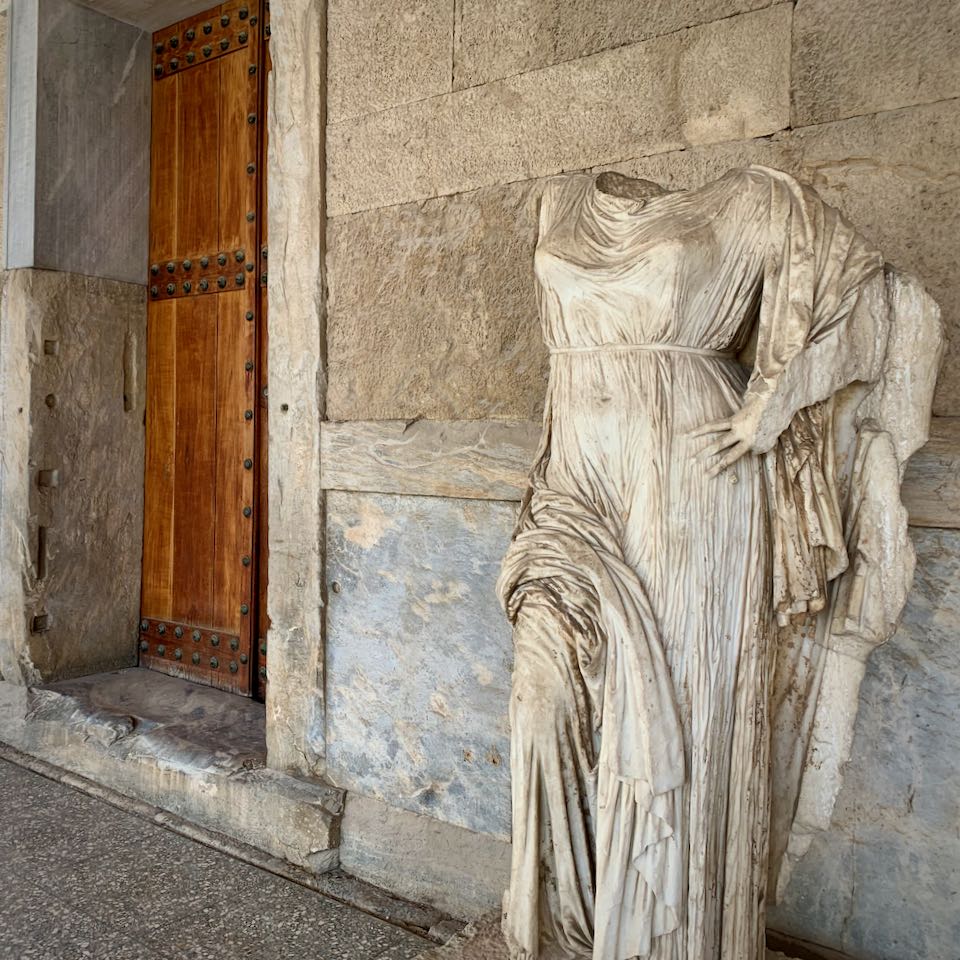
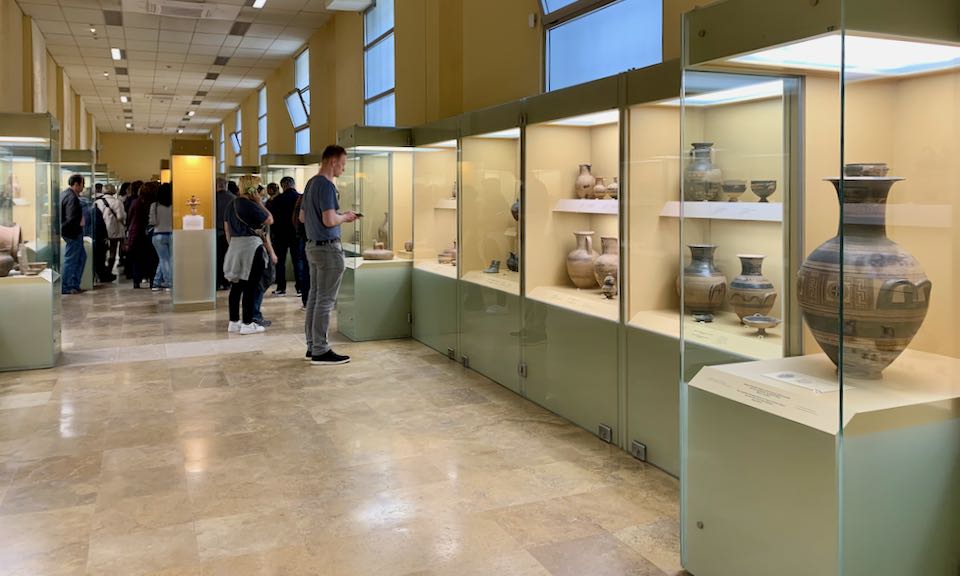
The Stoa now houses a museum that displays artifacts found in the Agora excavation site. The museum spans 10 of the Stoa’s original 42 shop spaces. Admission to the museum is included in the entrance fee to the site.
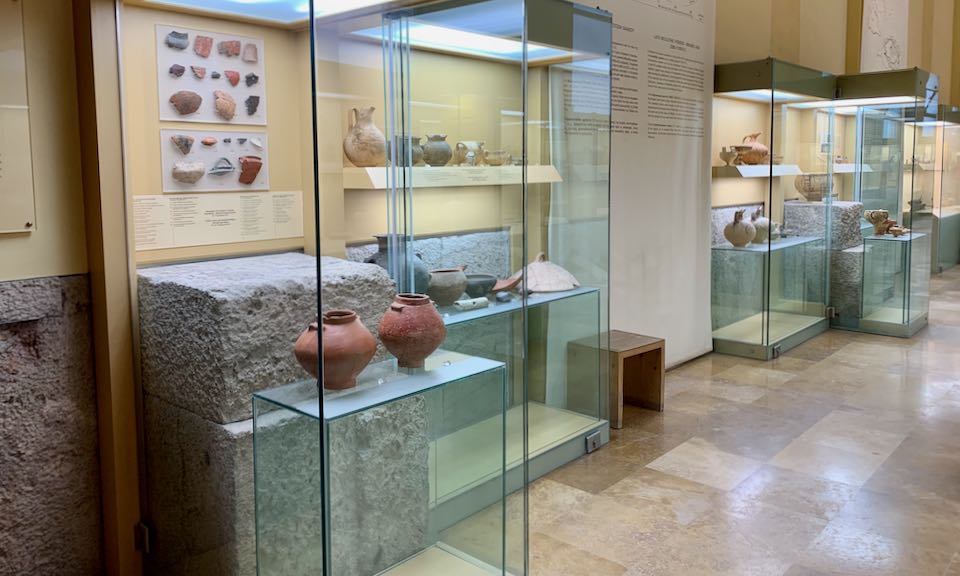
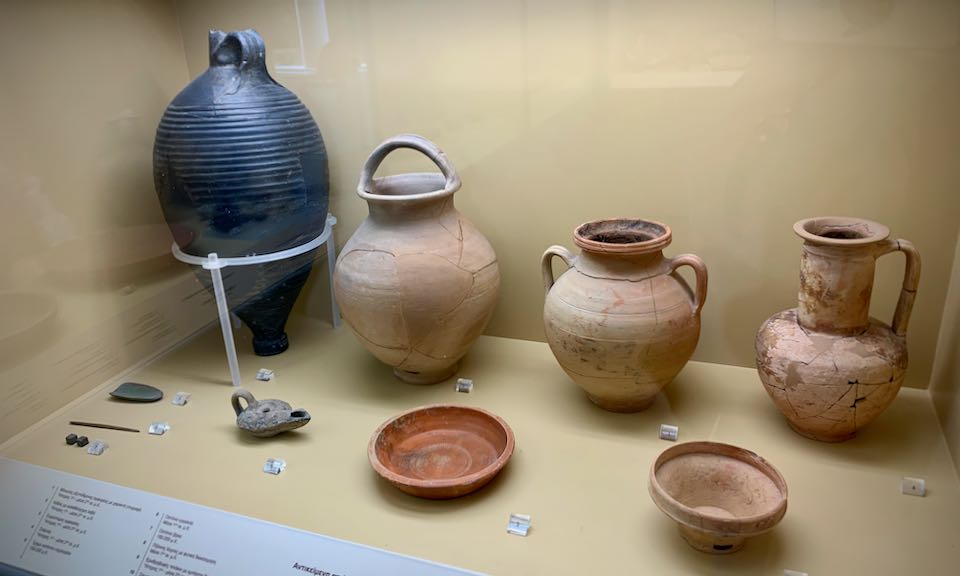
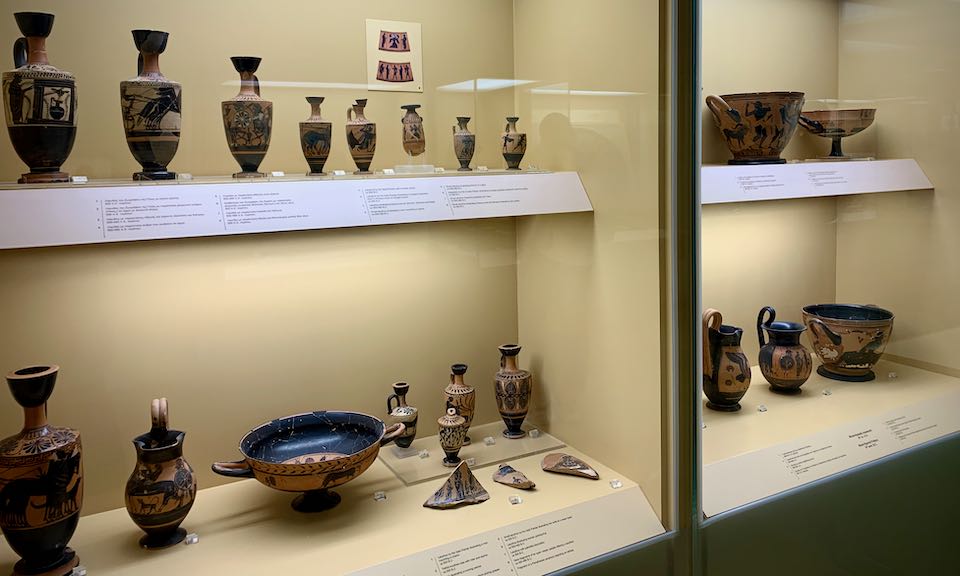
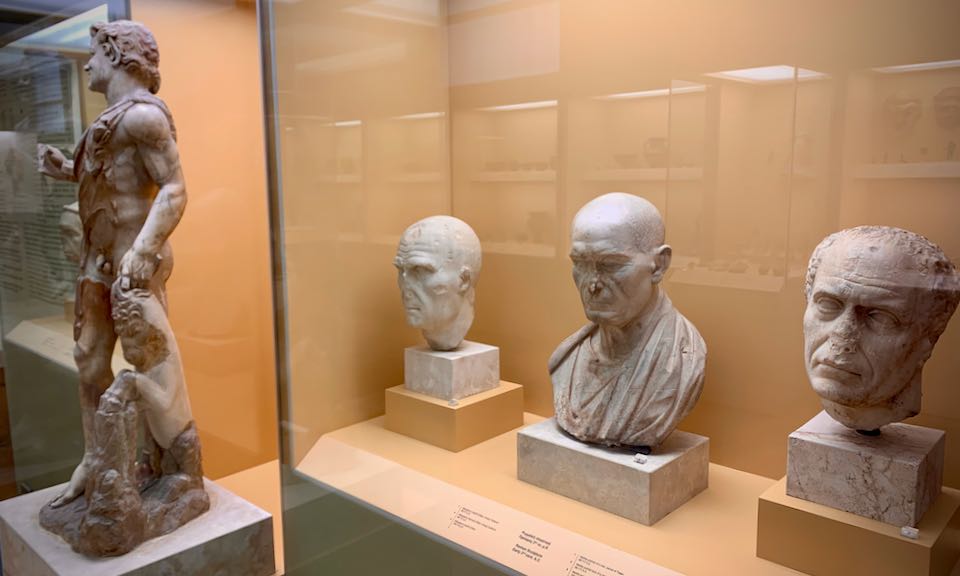
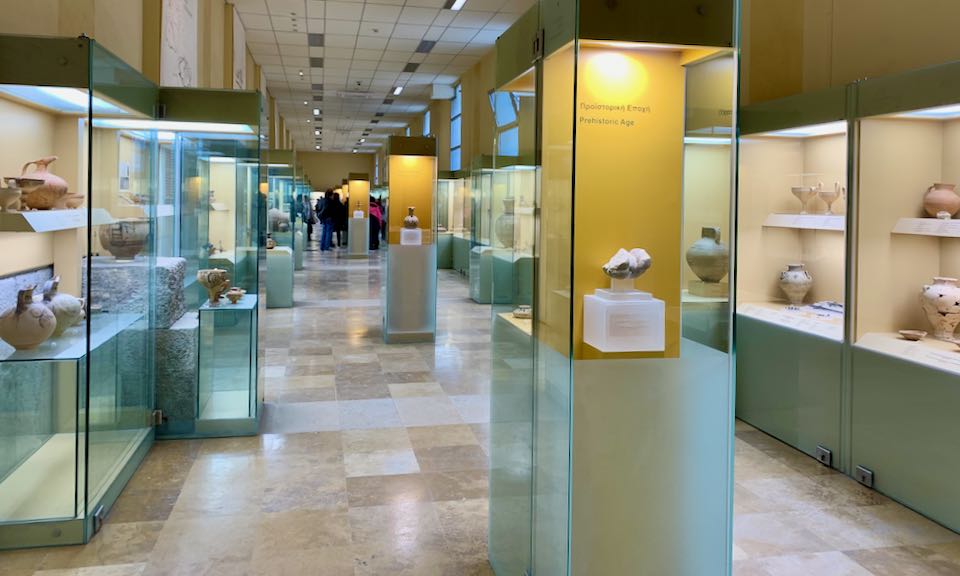
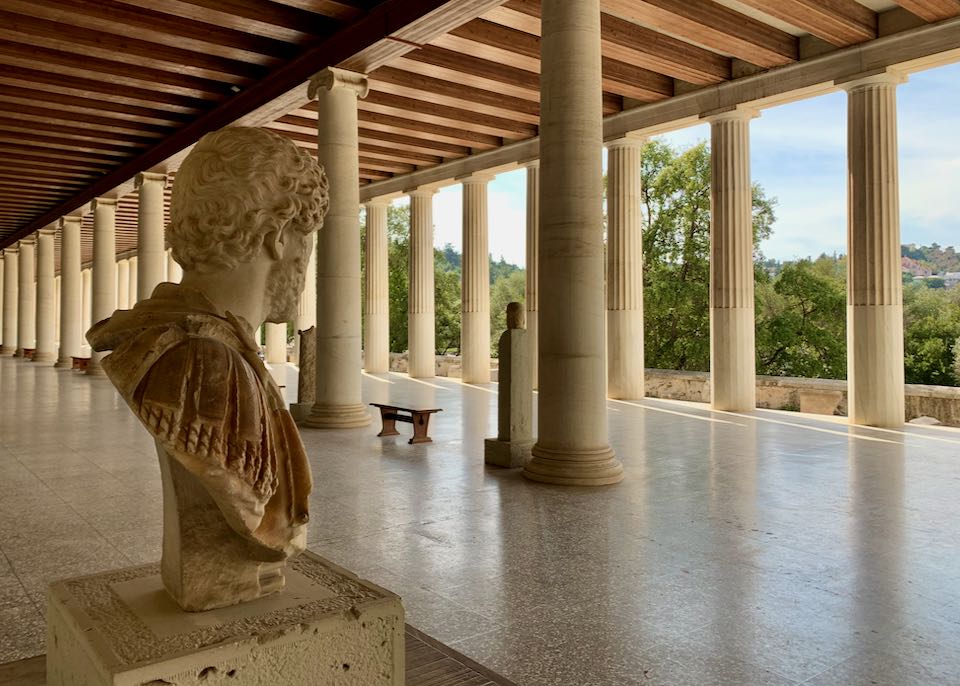
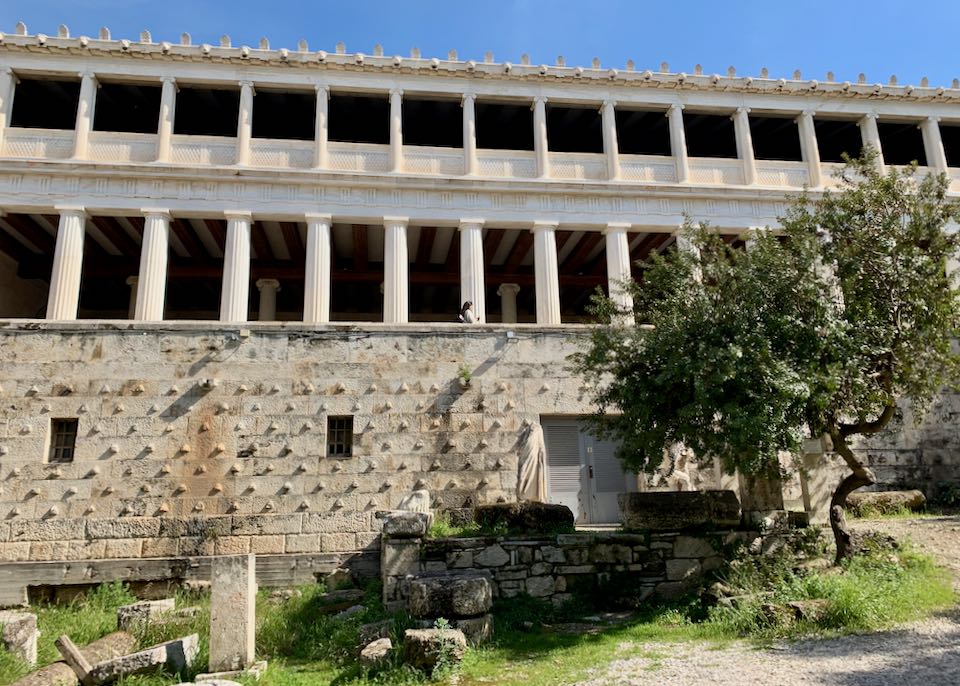

View to the Acropolis from the Ancient Agora.
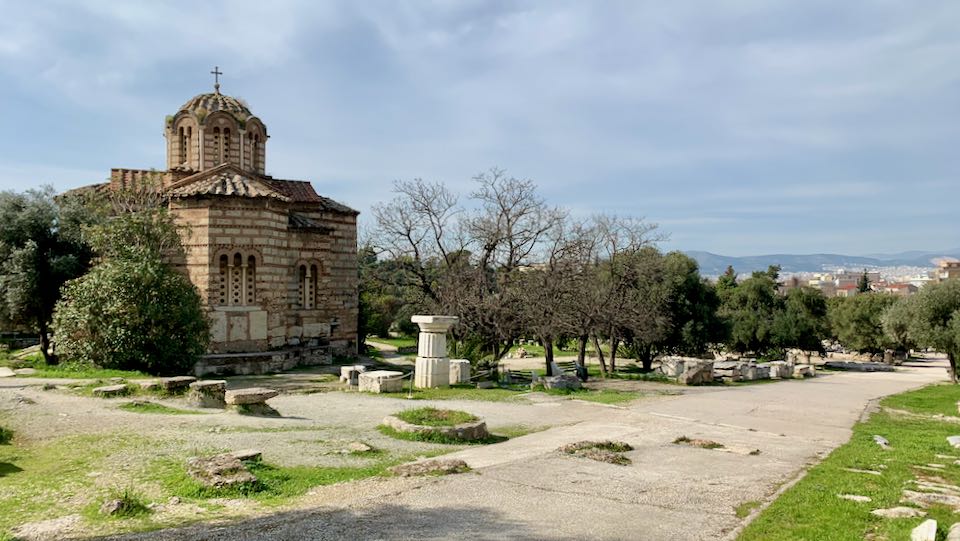
Just south of the Stoa of Attalos lies the Byzantine Church of Agioi Apostoloi. Dating back to the late 10th Century, it is one of the earliest byzantine churches in Athens.
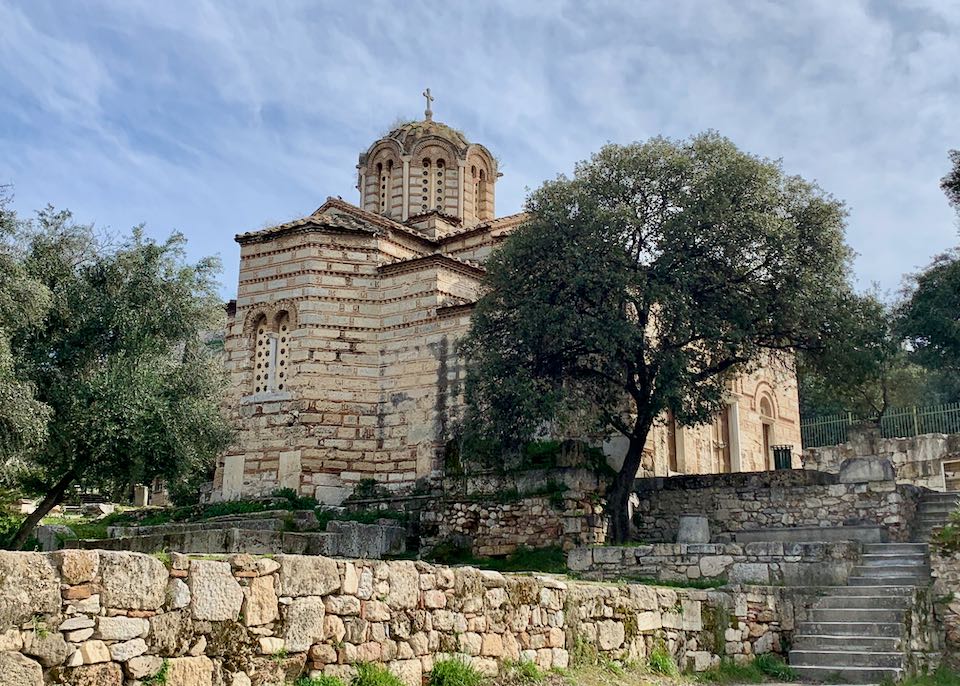
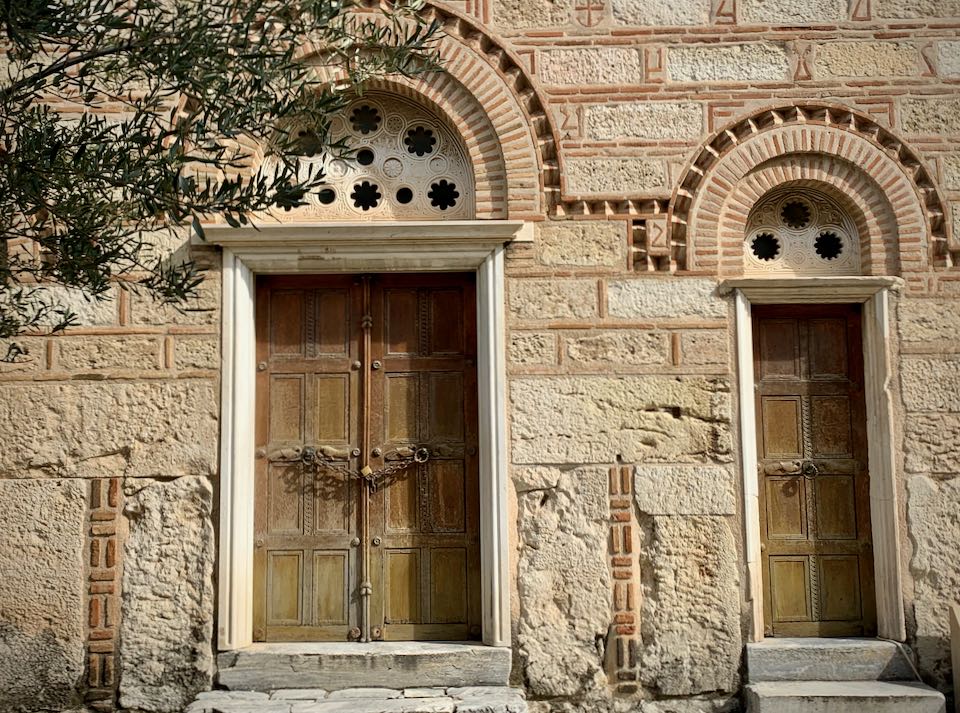
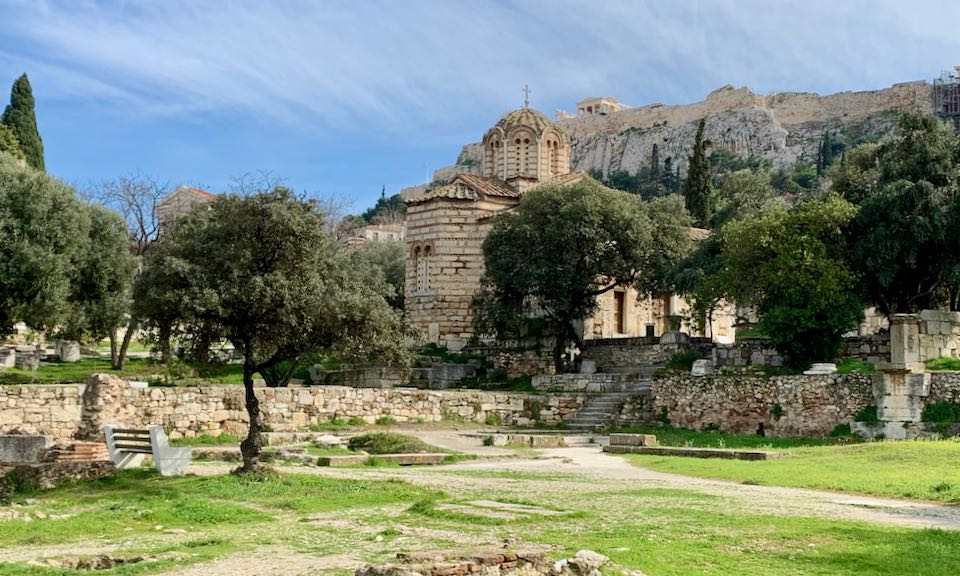
The church is generally closed to visitors, but opens once a year for a liturgy on June 30th.
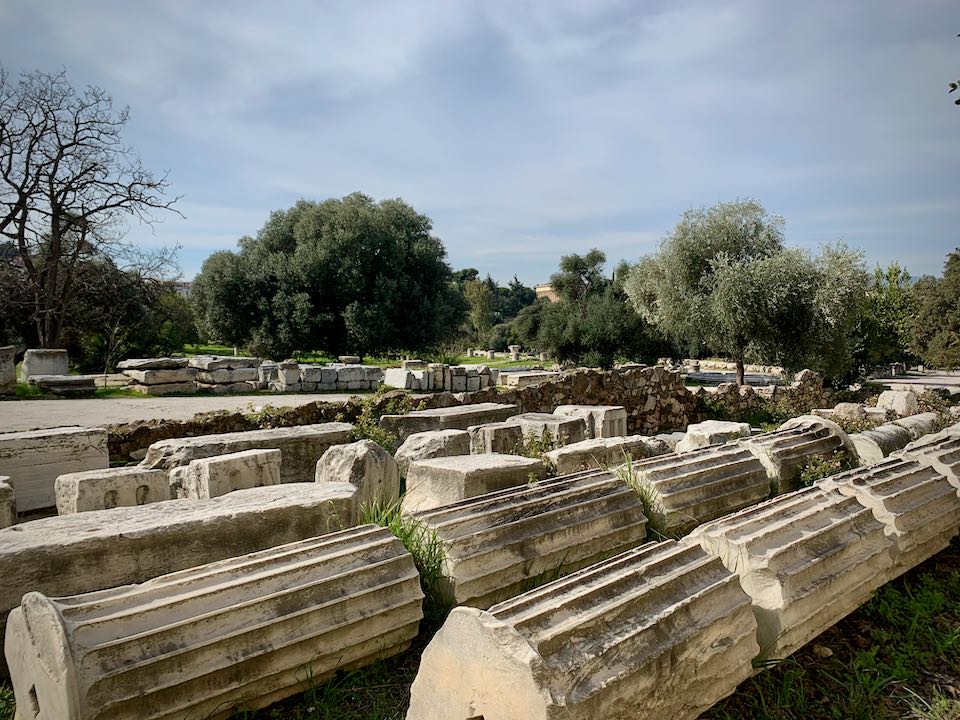
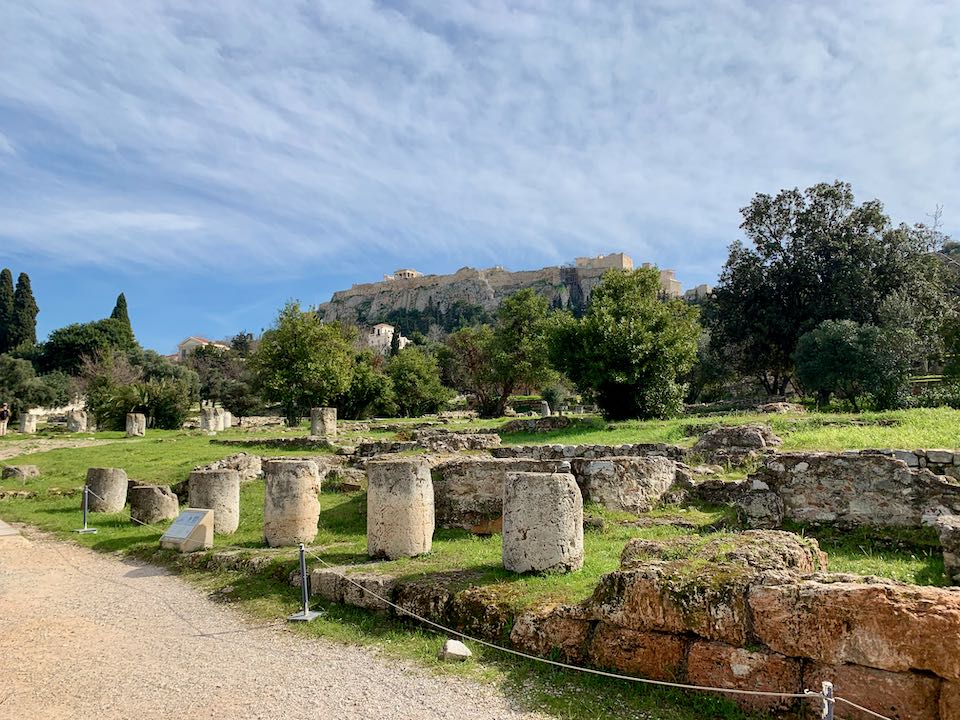
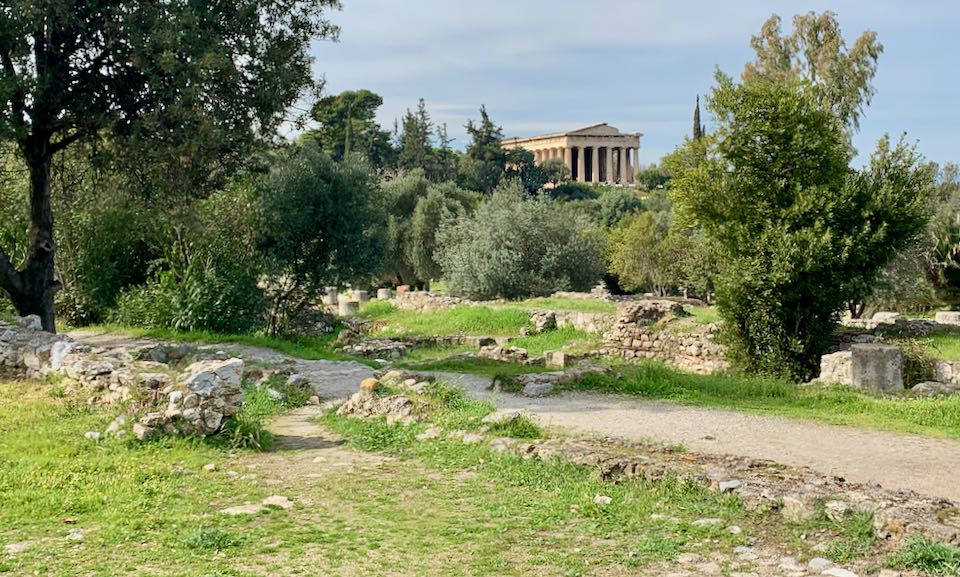
Across the Agora from the Stoa sit the beautiful ruins of the Temple of Hephaestus.
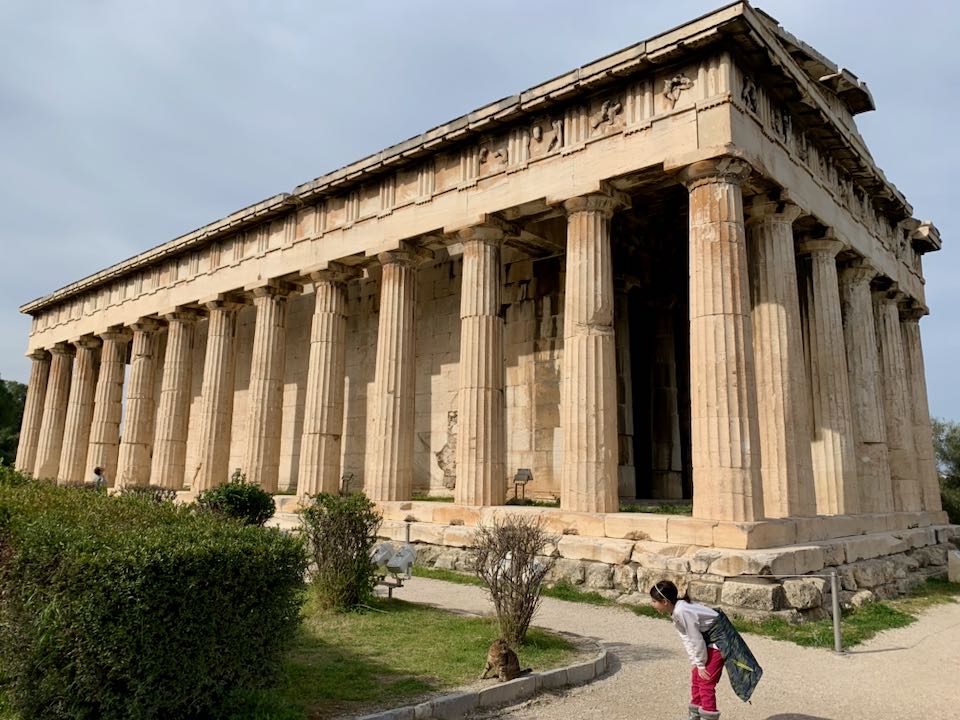
The temple dates from the 5th Century BC, and is named after the patron god of metal working, craftsmanship, and fire.
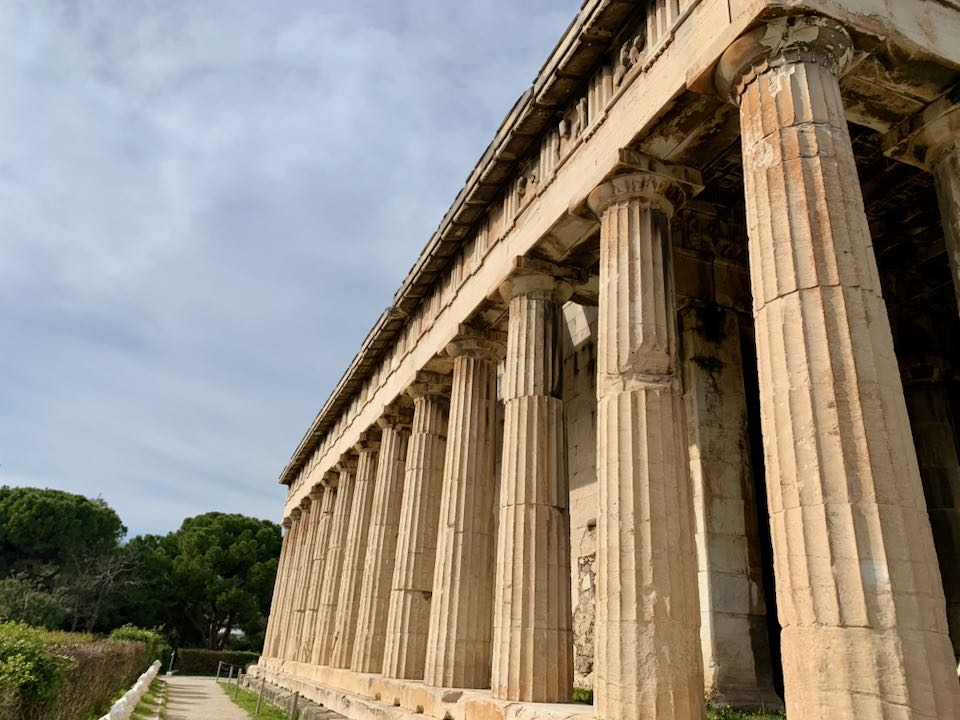
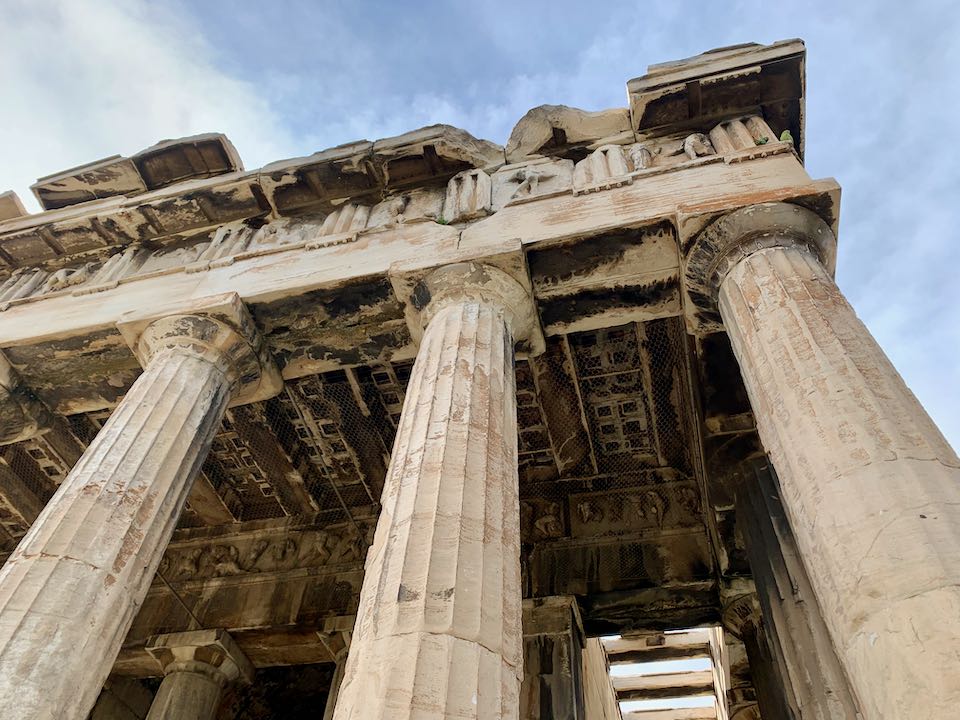
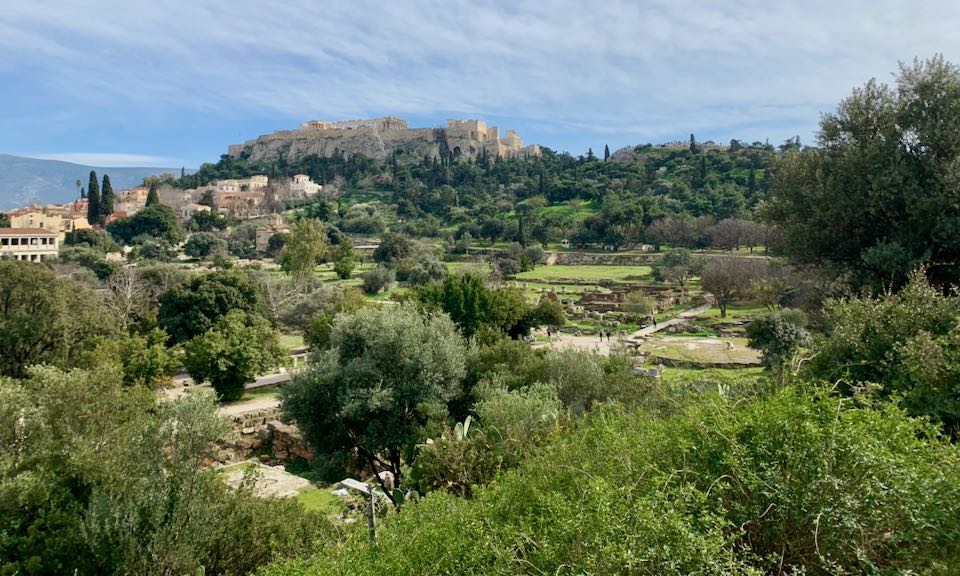
View across the Ancient Agora up to the Acropolis, as seen from the Temple of Hephaestus.
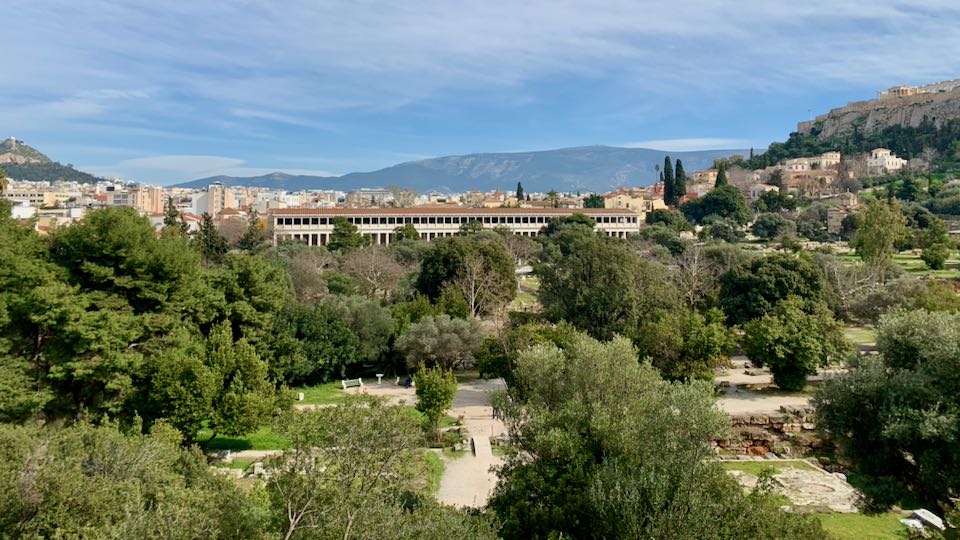
View of the Stoa of Attalos from the Temple of Hephaestus.
Read More
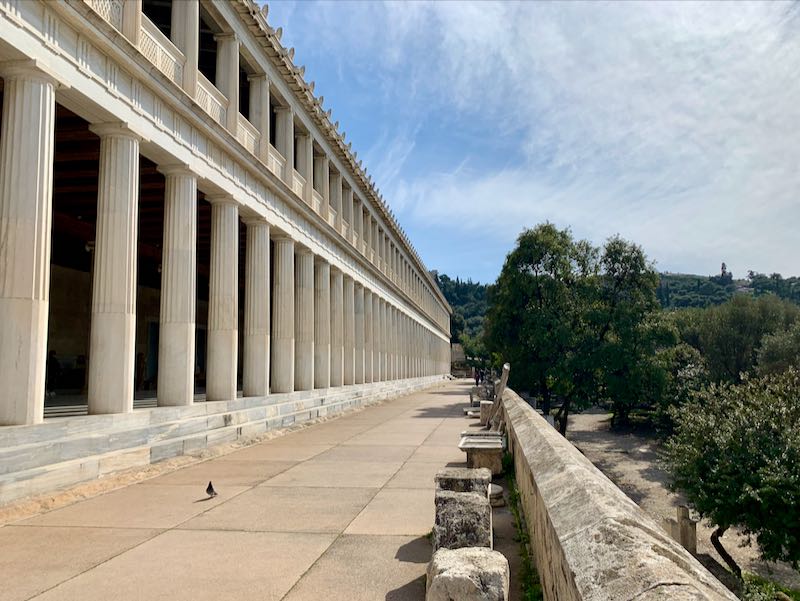
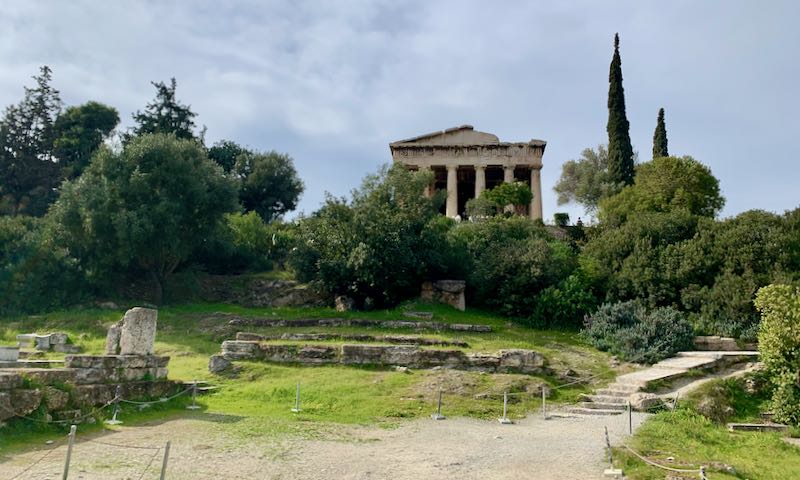
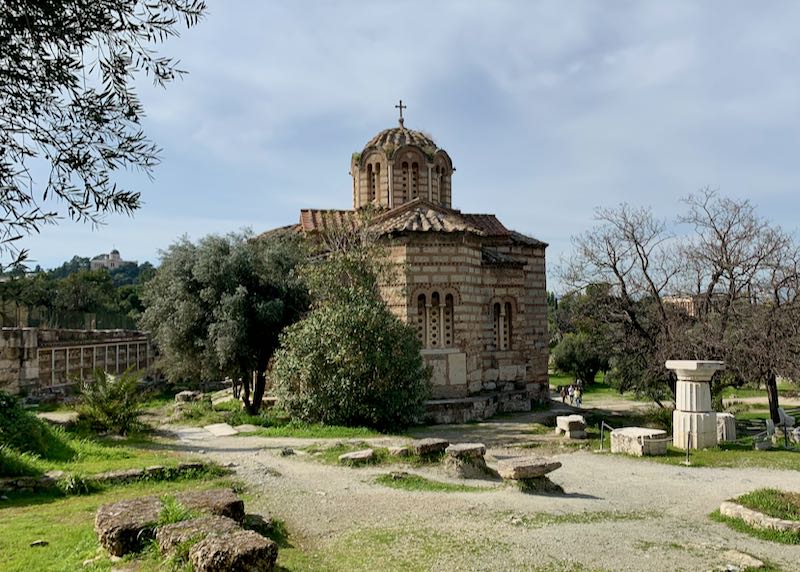
About Santorini Dave